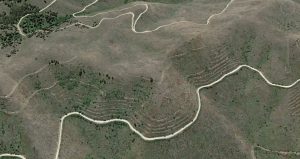Hawaii has several Firewise websites that seek to educate homeowners about best practices. The state has also written fire mitigation plans and developed fire risk maps. Notwithstanding these planning efforts, Lahaina was obliterated by a wind-driven wildfire. The catastrophe is likely to exceed 100 fatalities and cost billions to rebuild the town.
A series of vegetation-related events set the stage for this catastrophe. First was the 20th-century elimination of the native fire-resistant forest vegetation by pineapple and sugar cane plantations. Next was the abandonment of those plantations and their replacement by invasive grasses. Add in terrain-driven high winds common to parts of Hawaii plus seasonal drought and all that was missing was an ignition source, which has yet to be determined, but, once again, wind-downed power lines may prove to be the culprit.
After I made these observations last week on a firefighter’s website, which got me banned from the site (🤣), Sharon suggested I re-visit the topic here.
In my original comment on the firefighter site, I noted that Hawaii has no “Firewise-type program.” The firefighter blog’s owner responded to me with links to Firewise information websites. Although helpful, I explained to her that information is not a “program” that will move the needle at a community-wide level. Moving the needle requires enforceable building and vegetation codes, zoning, and ordinances, as I explained in a subsequent comment before being censored.
If it is to be effective, “Firewise” must be more than putting information on a website, doing analyses, drawing maps, and formulating plans. Firewise must also include on-the-ground actions. In Maui, that would have included replacing the invasive weeds with native species plantings. In their abandoned status, these former plantation lands are a time bomb — a deadly nuisance — that tragically blew up, as knowledgeable folks had warned for years. In other words, but for the invasive grasses, this tragedy would likely not have happened. Government is in the best position to require the former pineapple and sugar cane plantation owners to abate this nuisance. Unless and until that happens, the Lahaina tragedy will repeat itself elsewhere.
Mitigating the invasive grass threat would also have been much less expensive than wholesale Firewise refurbishment of Lahaina’s existing housing stock. Now, of course, Lahaina has the opportunity to replace its housing fire-wisely, with, one hopes, new and enforced building codes and zoning.
